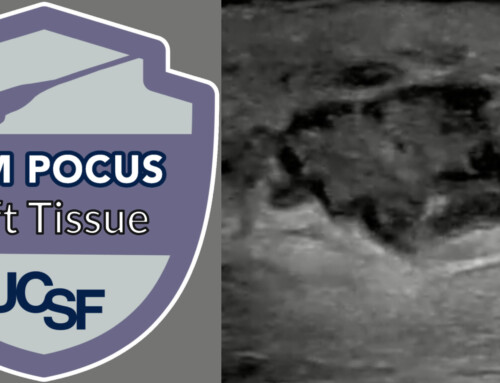 Just as in adults, pediatric sepsis is a complex topic with continued research. In the United States, there are an estimated 75,000 cases per year of pediatric severe sepsis with an in-hospital mortality of 5-10%.1,2 This is one of the deadliest conditions treated in children. In addition, after the Rory Staunton case, New York State passed regulations requiring all hospitals to have pediatric specific recognition, treatment, and data reporting systems. Several other states have adopted, or are considering, similar requirements. Thus it is critical that emergency physicians understand at least the basics of pediatric sepsis management.
Just as in adults, pediatric sepsis is a complex topic with continued research. In the United States, there are an estimated 75,000 cases per year of pediatric severe sepsis with an in-hospital mortality of 5-10%.1,2 This is one of the deadliest conditions treated in children. In addition, after the Rory Staunton case, New York State passed regulations requiring all hospitals to have pediatric specific recognition, treatment, and data reporting systems. Several other states have adopted, or are considering, similar requirements. Thus it is critical that emergency physicians understand at least the basics of pediatric sepsis management.
Definition of Sepsis
There have been many and varying definitions for sepsis, and as with updated adult criteria,3 pediatric definitions are likely to change. For this article:
Sepsis = Organ system dysfunction + Infection
 Intravenous Fluids
Intravenous Fluids
Although one might think fluids are the first treatment for most types of shock, fluid resuscitation in pediatric sepsis is controversial.
In adult patients, the ProCESS,4 ARISE,5 and PromISE6 trials failed to show mortality benefit of strict protocol-driven care versus “usual” care. Unfortunately, there is little pediatric data to go on. But interestingly, a paper by Maitland showed a HARMFUL effect of fluid boluses on children in Africa with sepsis.7
Does this mean we should fluid restrict all of our patients?
Although one paper does not refute all the existing knowledge about fluids and sepsis, it DOES raise questions. The 2015 Pediatric Advanced Life Support (PALS) guidelines provided a summary giving the available evidence for fluid resuscitation (reproduced below), and the majority of the studies fail to show a benefit.8
| Survival to Hospital Discharge | Need for Transfusion or Diuretics | Need for Rescue Fluid | Mechanical Ventilator or Vasopressor | Time to Resolution of Shock | Total IV Fluids | |
| Severe Sepsis/ Septic Shock | No benefit9,10 | No benefit | No studies available | No benefit | No benefit | No studies available |
| Severe Malaria | No benefit 11 | No benefit | Harm | No studies available | No benefit | No benefit |
| Severe Febrile Illness (with some signs of shock) | Benefit 7,12 | No benefit | No studies available | No studies available | Harm | No benefit |
Table 1. Evidence for the use of restrictive volume of intravenous fluid resuscitation, compared with nonrestrictive volume, by presenting illness and outcome in pediatric patients.8
PALS and Surviving Sepsis Campaign Recommendations on IV Fluids
The updated 2015 PALS algorithm suggests the following guidelines with some ambiguity, likely because of the paucity of existing literature:
| PALS recommendation | Our commentary |
| Administer 20 mL/kg fluid boluses (isotonic crystalloid) IV/IO over 5-20 minutes or faster if needed. | But is faster necessarily better? |
| Repeat 20 mL/kg bolus of fluids (up to 60 mL/kg) until clinical symptoms improve or patient develops signs of fluid overload. | |
| May continue to require additional fluids above 60 mL/kg. | Wait, didn’t they just say up to 60 mL/kg? Interpretation: When you start getting above this total, consider additional interventions or alternative diagnoses. |
| The fluid resuscitation volume may approach 200 mL/kg in warm septic shock. | That could be up to 10 boluses! |
Table 2. 2015 PALS and Surviving Sepsis Campaign Recommendations on IV Fluids with commentary
The Surviving Sepsis Campaign has a only 3 pages on pediatric sepsis, and explicitly states to follow the PALS guidelines.13 The existing guideline from the Society for Critical Care Medicine (SCCM), which was most recently updated in 2009,14 addresses this conundrum:
Fluid infusion is best initiated with boluses of 20 mL/kg, titrated to assuring an adequate blood pressure and clinical monitors of cardiac output including heart rate, quality of peripheral pulses, capillary refill, level of consciousness, peripheral skin temperature, and urine output.14
In addition, no clear choice of “the best” fluid exists. Use the isotonic crystalloid of your choice, but be aware that there may be subsets of patients for whom albumin may be appropriate. More research is coming!
Bottom Line in IV FluidsDo NOT stick to strict protocols mandating minimum fluid volumes for sepsis patients. Frequent reassessments and tailoring the volume of fluid resuscitation to each individual patient are better. |

Antibiotics
This is one of the places where knowing what to do can be easy and getting it done turns out to be hard.
In 2014 Weiss et al. evaluated pediatric patients in a tertiary care pediatric hospital who were treated for severe sepsis or septic shock. In patients who receive the first appropriate antibiotic more than 3 hours after meeting criteria for severe sepsis or septic shock, the adjusted PICU mortality OR was 4.84 (1.45 – 16.2) compared to patients who received antibiotics in less than 3 hours. However the median time to receiving the first antimicrobial was 140 minutes (more than 2 hours!) and echoes a paper by Paul et al15 showing poor adherence to antibiotic timing goals. The majority of the delay was from ordering to delivery of antibiotics, rather than getting the orders in. There are many places that this delay could be attributed to such as IV access, medication preparation, delivery from pharmacy, and IV pump set up. At each institution, the drivers are different.
While we all strive for antibiotic stewardship and decreased incidence of resistance, these are not the patients to target with those efforts. Think about how often amoxicillin is given for otitis media, and then go ahead and get at least a first dose of antibiotics into your potentially septic patients as quickly as possible. Make sure everyone involved in that patient’s care knows how important speed is.
Bottom Line on AntibioticsFor your potentially septic patients, decide on the appropriate antibiotics, and give the first dose as soon as possible. |
 Vasopressors
Vasopressors
Again the pediatric data is limited. The SSCM guidelines list dopamine as the first line vasoactive for pediatric sepsis in most cases. In the 2015 update of PALS, classification of septic shock by ScVO2 measurement and classical definition of “warm” and “cold” shock is still recommended to determine vasoactive choice. In practice, particularly in the ED, very few pediatric patients have ScVO2 measurements, and we have evidence that we are not nearly as good at classifying warm versus cold shock as we think16. Several adult studies showed increased mortality with dopamine compared to other vasoactive agents.
What do we do?
We only have a single pediatric trial, which compared dopamine to epinephrine in these patients,17 which showed increased mortality and morbidity with dopamine. There are some concerns about whether the doses of the medications used in this trial are truly equivalent. As yet a definitive answer is not available, though the SCCM is due to publish updated guidelines on this topic. In practice, dopamine is often the fastest vasoactive medication to get started in the pediatric ED, but transitioning these patients to norepinephrine or epinephrine should be done quickly.
A note about steroids: They are not routinely indicated, but are an option for patients refractory to fluids and vasoactive medications, or who are at risk for adrenal insufficiency.
Bottom Line on VasopressorsThink about vasopressors for any patient not responding to their third IV fluid bolus, and be prepping some other intervention. Dopamine is ok to start with, but you want to think about transitioning to a different drug quickly. Steroids are not routinely indicated, but if the patient is not responding to vasopressors, consider giving them. |
 Lactate
Lactate
Once more, pediatric data is sparse. In 2012, Scott et al. showed that among pediatric SIRS patients, those with serum lactate ≥4 mmol/L at initial presentation, were more likely to develop organ dysfunction, require ICU admission, and have serious bacterial illness. In 2016, Scott et al. prospectively evaluated lactate levels at 0, 2, and 4 hours in patients with infection and organ dysfunction. Patients who had normalization of their lactates (<2 mmol/L) had a decreased risk of persistent organ dysfunction at 48 hours (RR 0.46, 0.29-0.73). In 2017, Scott et al. evaluated 30-day in hospital mortality of pediatric patients with sepsis and a serum lactate >4 mmol/L. Patients with elevated lactate levels had an adjusted OR for mortality of 3.26 (1.16 – 9.16). However, few patients had lactate this high (105 of 1299) and only 5 of the 25 deaths in the cohort had lactate above this threshold, leading to a sensitivity of 20% for 30-day mortality.
Bottom Line on LactateLactate is one tool, among many, for identifying patients with sepsis but its sensitivity and specificity are poor. Patients with an elevated lactate level (>4 mmol/L) have a higher risk for severe outcomes, including death. Lactate may be useful as a risk stratification marker. |
 Endotracheal Intubation
Endotracheal Intubation
Unless unable to oxygenate, ventilate, or protect their airway, few pediatric sepsis patients will require intubation in the ED. Whether or not they may benefit from the decrease in metabolic demand is a different discussion. Particularly in patients with shock, who likely have a relative catecholamine deficiency and issues with fluid volume and distribution, the physiologic changes associated with positive pressure ventilation are incredibly dangerous. You are likely to precipitate cardiovascular collapse. Even in the patients who will eventually require intubation, you ideally need to have them first fluid-resuscitated and on vasopressors, or be prepared to initiate these immediately, before doing so. Prepare by assuming that every one of these patients is going to hemodynamically crash upon intubation.
Summary for Pediatric Sepsis Management
- The definitions and guidelines are confusing, sparse, and changing.
- Reassess every patient after every intervention, before providing additional therapies.
- Timely administration of IV fluids and antibiotics is critical.
- Begin fluid resuscitation quickly but do not force patients to have a “minimum” number of boluses. Tailor the approach to each patient, with frequent reassessments.
- Initiate antibiotics as soon as possible, and do not agonize as much about stewardship. If sepsis is likely, give them the first dose and sort out details later.
- The best choice, first-line vasopressor is likely not dopamine. However, in practice, other vasopressors (especially norepinephrine) can take longer to get ready, so a reasonable approach is to start dopamine while preparing your other drugs.
- If you the patient remains in shock despite IV fluids and vasopressors, consider adding steroids.
- Intubation can be deadly and is rarely needed in these patients. Optimize hemodynamics first. If intubation is absolutely necessary, be prepared for cardiovascular collapse.





